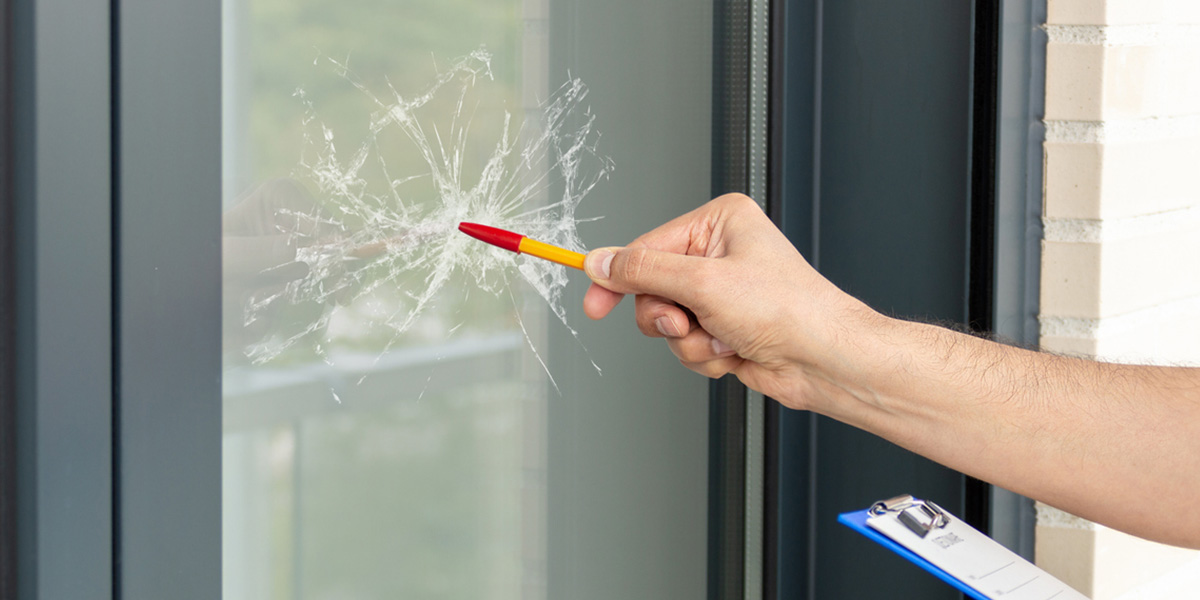
Your windows are an important feature of your home. Beyond aesthetics, they contribute to energy efficiency, security and comfort. A cracked window is more than an eyesore – it’s a red flag. From rising energy bills to security risks, that little crack can cause big headaches. The good news? By taking action, you can avoid window-shattering consequences. Understanding why cracks happen and what to do next is key to protecting your home.
Crack the code to cracked windows. Learn how they happen, their risks and what you can do about them.
Cracks can happen for many reasons. Extreme temperatures, poor installation or an overenthusiastic backyard baseball game can be culprits. Causes of damaged windows include:
Windows help keep the inside of your home cozy. They form a barrier against outside conditions for a consistent, comfortable indoor temperature. Sudden jumps between hot and cold may lead to fractures. Differences in outdoor and indoor temperatures cause glass to expand and contract at different speeds. The temperature tug-of-war puts stress on weak points. Too much strain can result in an hourglass-shaped thermal stress crack. This type of split runs perpendicular to the glass.
A solid object hitting your window with enough force can cause the glass to shatter. Impact cracks resemble a starburst. Spiderweb-like fractures radiate from the point of impact. Balls, hailstones or over-eager birds can cause this kind of window damage.
The air around us has weight that pushes against objects. Extreme or rapid changes in this atmospheric pressure may trigger a fracture in your window pane. A pressure crack has a similar hourglass shape to thermal cracks. Pressure may also damage the frame, leading to a complete window replacement.
In some cases, poor installation can lead to cracks. Improper fitting of the glass inside the frame can stress the window. Gaps or weak support may cause uneven weight distribution, making the glass vulnerable. Even over-tightening screws can create pressure points. Installation by qualified professionals can avoid problems down the line.
As windows age, they experience natural wear and tear. Over time, the materials degrade. Sealants dry out, making the window less flexible and more sensitive to temperature changes. The frame might warp or shift, putting pressure on the glass. Small imperfections accumulate, weakening the structure and making breaks likelier.
A damaged window affects your home’s comfort and security. Consider these risks:
It can be tempting to ignore a small window crack. Left unchecked, minor cracks can become major problems, compromising your home’s integrity. Here’s how you can take action:
A few tricks can help prevent the crack from worsening while you wait for repair.
Remember, these fixes are temporary. The most effective – and permanent – solution for a cracked window is to replace the damaged glass.
Call your local trusted window repair or replacement company. They can assess the damage and recommend the best solution for your budget. Sometimes, they can replace the broken pane without replacing the entire window. Repair may be cost-effective if the frame is in good condition.
Consider replacing your old or damaged windows with high-quality, energy-efficient options. Many replacement windows feature double- or triple-pane glass. Tough multipane windows offer durability, temperature control and crack resistance.
Upgrading your windows has many benefits:
Replacing your windows breathes new life into your home. As a homeowner, what can you do to prevent fractures in the future? These tips can help stop cracks in their tracks:
Renewal by Andersen understands the worry that a broken window can cause. We design our replacement windows tough enough to resist cracks and beautiful enough to enhance your home. Quality comes standard. Each window combines high-performance glass and durable frames with Fibrex® material.
We handle every step – from custom-building your perfect window to professional installation. Discover how our windows can transform your home. Reach out today to arrange your complimentary consultation!